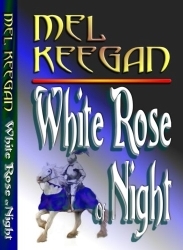
|
 The world of a millennium ago is a thoroughly alien place. Almost every aspect of human society has changed, and while the most visibly obvious changes involve technology, the most powerful changes have taken place inside the human mind and heart. The world of a millennium ago is a thoroughly alien place. Almost every aspect of human society has changed, and while the most visibly obvious changes involve technology, the most powerful changes have taken place inside the human mind and heart.
This novel is a historical for the most part, with a twist of the fantastical; but purists are sure to tell me it’s more fantasy than not, because I’ve ‘sanitized’ the Thirteenth Century. The picture I’ve painted in this novel is a lot cleaner, and smells a lot better than the reality would have. And I admit, I’ve skirted around (rather than glossing over) some of the ‘difficult’ areas of history. I didn’t want to paint over them, because then I would have been dishing up fantasy in the guise of history! But, having said that, I need to make a couple of points right here.
The lifespan of the average human was a great deal shorter in these days. By sheer luck one person in a thousand might live to be eighty years old, but the average man could expect to live to forty if he didn’t meet with a sticky end; women seldom lived past the age of thirty, and even when people did live so long, they were pretty decrepit.
Not surprisingly, people also matured faster and started their lives a lot sooner than kids do in the world we know. When this story begins, Paul is a short of his sixteenth birthday, but in fact he’s actually too old to be a squire. At fifteen, he’d be a soldier. I admit, I’ve taken a few liberties with this aspect of the story, and with good reason. I didn’t want to make Paul any younger, for the same reason. Generally, in this story, and without exception in the more sensual sections, the term ‘boy’ should never be taken to imply that any of these characters are underage. They are definitely not. In their world, they are the equivalent of midlate teens, and older. If their world had a legal age of consent (which it didn’t), these characters would be way above it.
The facts of history are at odds with our understanding of coming of age. It’s tough for us to imagine hardened, embittered warriors of age fourteen; people married with children at age twelve; or girls of ten years ‘sold’ into marriage to men of their grandfathers’ age! Crafting fiction like this, you’re on a sticky wicket. You can either impose our present on their era (and pretend children were not pitchforked onto battlefields — which they were, until the time of WWI), and squires were eighteen years old (utter nonsense), or you can tell the unvarnished truth (which could get a little obnoxious, and would certainly stretch the limits of what’s permissible in fiction. Few legitimate novelists want to tread there). Or you can seek a compromise.
I tried for the latter. My characters are much older than they would have been in reality; they’re young by the understanding of our era, but transpose here. If you’re going to be decrepit by age 28, you’d be a mature adult at an age when our youngsters are still in class. All my characters are of age. It’s all relative; the numbers are deceiving.
The second area in which I hunted for a compromise was in the depiction of very real and very bloody events, such as the mass-execution of the Saracen POWs, shortly after Edward and Paul arrive at the camp of King Richard. Sad to say, this is a historical event. The historical Richard the Lionheart has little in common with the ‘icon’ who has become ‘Hollywood mythology.’ Again, sad to say, the depiction of him in this novel is pretty close to the truth.
‘White Rose’ was written around 1994, and even then it was difficult to handle, because the racism and sexism which, to us is anathema, were commonplace in the novel’s world. Delicacy and circumspection seemed the best policy; I hope I succeeded. This is the world of the fairly distant past ... please accept it as such. At the same time I wanted to try to show the human face of the enemy. Political tensions in the last few decades have made the subject of Islam delicate, but I focused on the purely historical, and I hope to have ducked anything remotely related to current political woes. Accept the picture of Islam painted here in the same spirit as you accept the legend of Sinbad. This was my intention.
The black-magic book belonging to the sorcerer Ibrahim was modeled on The Book of Dead Names, ascribed to Abdul Alhazred. In this context the whole thing is completely fictional ... on the other hand, I wouldn’t suggest you try actually intoning any of these incantations in the wee small hours ...
Finally, I decided to go with the English spellings which were used in the original edition of this novel. Changing to US spellings for a story which is so very far-removed from the US looked odd. If US readers see some weird-looking spellings, trust me: that’s the way they spell it on t’other side of the pond!
In the research for ‘White Rose’ I was blown away by a book called 1066: The Year of the Conquest, by David Howarth (William Collins, 1977). Little else was necessary for research, save to look at the ‘war reports’ from the front lines in Palestine and Normandy, germane to the Crusades. Get a copy of 1066 if you can. It’s a wonderful read.
Please enjoy ‘White Rose’ in this edition, which has been very marginally reedited from the 1997 GMP edition.
|

